St. Louis Park VR company helps Gates Foundation spread awareness to eradicate polio worldwide7/22/2024 REM5 Studios finds niche in creating immersive films for humanitarian campaigns. With the investment of billions of dollars over the past several decades, mass immunization efforts across the globe have made polio nearly nonexistent. In Afghanistan and Pakistan, however, there are cases of wild polio, and variants of the viral disease are being discovered in several other countries, primarily in Africa. If not fully eradicated, within a decade, a resurgence of 200,000 new cases could happen annually, according to the Global Polio Eradication Initiative (GPEI). To draw awareness to the dangers of polio and its threat as a public health issue, top leaders at the Bill and Melinda Gates Foundation, a nonprofit partner of the GPEI founded by billionaire Bill Gates, the co-founder of Microsoft, and his former wife and businesswoman, Melinda, sought new and fresh messaging platforms. In previous years, the foundation would have funded trips for politicians and potential donors to witness firsthand the effects of polio in various parts of the globe. Strategies around effectiveness shifted, though, and finding a way to bring the frontline experience to potential donors and decision-makers was needed. A Minnesota company's technology would become the tool to execute that vision. In early 2023, creative minds at REM5 Studios, a St. Louis Park-based immersive and virtual reality development and experiences company, began conversations with staff at the foundation, widely regarded as one of the world's largest philanthropic organizations, to discuss such a product. With new technology, they discovered that they could virtually teleport people into an immersive experience and reignite support around eradicating polio. Compared with television commercials, power point presentations and pamphlets, it would supercharge feelings of empathy and create action and change. "You've seen the commercials," said REM5 director Brian Skalak. "For 28 cents a day you can change a life. We didn't want to do that." With grant funding from the foundation and permission and access from government officials in Zambia, in southern Africa, REM5 innovators spent days filming content to create "Polio's Last Mile," an immersive and augmented reality video that follows volunteers in Zambia administering vaccines to children. The video can be seen two-dimensionally on a computer screen, but was designed for viewing inside a VR headset. During the full immersive segment, with each head turn, the viewer sees a different angle of volunteers and villagers. The film ends with a message from Bill Gates explaining why and how people should contribute to the cause. With polio roughly 99% reduced worldwide, the last mile refers to health officials, governments and philanthropic organizations being near the finish line of completely eradicating the virus, said Amber Zeddies, a senior program officer at the Bill and Melinda Gates Foundation, based in Seattle. "People have forgotten about polio because it is gone in most places," Zeddies said. "So how do we keep it top of mind and relevant enough so we can cross that final threshold and move on to other public health and development priorities?" Zeddies, a St. Paul native, met REM5 chief executive Amir Berenjian at South by Southwest, the mega tech and film convention and music festival in Austin, Texas. While there, "[Berenjian] was kind of chit-chatting about the power of virtual reality and bringing people to places they can't physically go," she said. REM5 leaped at the opportunity. "To do this now with Bill Gates is a dream come true," Berenjian said. The video was shown to 1,500 people using VR headsets over a five-day period at a Rotary International conference in Singapore earlier this year, making it one of the largest VR activations in the world, Berenjian and Skalak said. So far, nearly 4,000 people have watched the film using VR headsets, they said "We can see someone take off the headset and then want to make a difference," Skalak said. The Bill and Melinda Gates Foundation has ideas to make the experience available in other languages, like French and Mandarin, Zeddies said. The foundation has plans to also make the experience available to attendees at the World Health Summit in Berlin in October, she said.
"Polio's Last Mile" is a relatively revolutionary method of storytelling for humanitarian efforts, Berenjian said. For years, engineers, software developers and enthusiasts talked about using virtual reality technology as a means of bridging the gap in human connection. REM5, which started in 2018, was founded on the idea of making virtual reality more available to the masses. In the past year, though, the launch of the new Meta Quest 3 VR headset and the Apple Vision Pro allowed industry leaders to create value for VR technology at scale. REM5 has used the tech for other projects — a behind-the-scenes look at how cheese is made for a food production company, and a virtual game-day experience for the Minnesota United FC. Similar to "Polio's Last Mile," REM5 is creating an immersive experience for the American Cancer Society to build awareness and donations for more Hope Lodges, a free place to stay for patients undergoing treatment. Work like this "has always been the most rewarding," Berenjian said. Amir said his company isn't replacing traditional storytelling platforms. Fully immersive and augmented reality "is just another extension," he said. "We're using it to make the world a better place," he said. Original article
0 Comments
Human-computer interaction will be a huge component of the future, but REM5 STUDIOS is trying to bring technology to the masses right now.
REM5 has worked with Target, General Mills, the University of St. Thomas and others to make it part of their employee training. In the wake of George Floyd's murder, local entrepreneur Amir Berenjian and his team wanted to create a safe and accessible space to talk about some of the Twin Cities area's challenges, including its racial equity gaps, which are among the largest in the country.
Berenjian describes what his St. Louis Park company, REM5, created as akin to a "virtual social justice museum" — an exhibit in the metaverse. Similar to a computer game, people can walk through a virtual gallery of information and images on their home browsers. REM5 has worked with General Mills, HandsOn Twin Cities, the University of St. Thomas and most recently Target to make the "1 City. 2 Realities" virtual experience part of employee training. REM5 was founded in 2018 with the idea to make the technology of virtual reality more available to the masses. The company recently launched the virtual exhibit on a new digital platform that Berenjian hopes can evolve into an easy interface for clients to build their own immersive learning and development experiences within the metaverse without the help of a developer. "We believe that the metaverse or spatial web is a really, really powerful tool, but it's not accessible for most people so we built experiences and tools that empower non-gamers," he said. "Think of it like the Wix [website design builder] for the metaverse," he said. A few decades ago, people needed to hire web developers to build simple blogs or websites. Now, design applications allow novices to quickly create a fully functioning site. REM5 has a brick-and-mortar lab in St. Louis Park where people can host events and rent time to play games with the help of virtual reality headsets. It also has a REM5 Studios creative agency and the REM5 For Good arm, which creates virtual experiences for education, corporate training and beyond. It has used virtual reality to help with other diversity and equity training in the past. But in summer 2020, after Minneapolis became the center of a racial reckoning that swept the world, the REM5 team developed the "1 City. 2 Realities" experience. "I had all this data that basically told this story of Minneapolis and Minnesota and how we hold ourselves up as 'Minnesota nice' and best parks and greatest places to live, yada, yada, but when you start to look at the data around wealth gaps, education gaps, incarceration rates, redlining, we are like the bottom five," he said. People choose an avatar to "walk" through several gallery rooms with statistics, photos and videos, including murals painted across Minneapolis; a map of minority neighborhoods that were redlined as high-risk for mortgage lending; and 360-degree photo spheres that allow the user to travel through George Floyd Square. The experience is done through a web browser. REM5, which had been known for its experiences with virtual reality headsets, had to adjust during the pandemic to engage users remotely without them having to wear headsets and be in the same room. More companies have started to dip their toes in immersive metaverse experiences. This week, Walmart announced it had created a Walmart Land and Walmart's Universe of Play within the Roblox metaverse game platform. https://www.startribune.com/st-louis-park-tech-firm-rolls-out-virtual-social-justice-museum/600211704/?refresh=true RICHFIELD, Minn. — Art takes work, and the mural at East 72nd Street and Chicago Avenue in Richfield is an example of that. Standing 80 feet wide and 12 feet tall, the rainforest mural is a reflection of community collaboration at it's best.
"In order for a rainforest to prosper, there has to be diversity," Galaxy Food owner Arun Motilall said. Motilall and his friends began the process for the mural two years ago when Galaxy Foods decided to get the community involved in the artwork. They held a few events where they cooked for their neighbors and asked what they would like to see represented in the mural. Artist Ricardo Reyez says community members from different cultures wanted him to bring a rainforest to Richfield. "We brought elements from a lot of cultures," Reyez said. There is a mix of Mexican, Puerto Rican and Caribbean representation in the masterpiece. Rem5 Studios helped bring it to life outside of the walls. People scan one of the four QR codes on the mural through their camera setting on a smart phone. They can then click the link that pops up and open Instagram to see the art pop off the building. "Seeing people engage with technology that is basically like magic, " Amir Berenijan, Rem5 Studios CEO said, "It never gets old." BJ Skoogs works with Berenijan. It was his idea to mix the augmented reality into the mural. He says the mural wouldn't have been possible without their community partners, and help from the City of Richfield. "I grew up here," Skoog said. "I love it here. I think it's that bridge city. The beautiful thing about a bridge is it connects people." Rem5 Studio plans to update the AR every so often so the art work can change without having to physically add more paint. Berenijan says AR is apart of a growing movement of art sustainability. https://www.kare11.com/article/news/local/richfield-rainforest-mural-comes-to-life-with-ar-tech/89-fdace0f1-906c-4db8-9d0b-a433f6434d53 Steps Of Privilege is available for free on the Meta Quest via the App Lab.
We’ve talked heavily in the past about VR’s unique empathetic capabilities. In addition to entertainment, immersive technology can and is being used by numerous organizations to instill a sense of compassion while educating users on a variety of important subject matter. This includes REM5 Studios, an XR experience agency that for the past several years has been working on Steps of Privilege, a one-of-a-kind educational experience that explores the subtleties of diversity, equity, and inclusion. Put simply, the app is a kind of privilege test designed to highlight the advantages and benefits one may inadvertently receive due to their unique social background. “This exercise provides participants with a unique opportunity to understand and reflect on the intricacies of their own privilege in a safe and judgment-free environment, while not exploiting the stories of others,” says REM5 on their website. Throughout the course of the exercise, participants listen and respond to 20 statements delivered by a virtual monitor. One question you might be asked, for example, is whether or not you studied the culture of your ancestors in elementary school. If you hear a statement that applies to you, you’ll be asked to physically move forward; if the statement does not apply, you’ll take a step back. You can also listen to the reflections of other users by interacting with a handful of floating orbs and even leave your own. At the end of the experience, you’re able to look around the room to see how far your privileges took you compared to those with different backgrounds and experiences. “The Steps of Privilege experience accelerates the timeline for an individual to reach an intercultural mindset, recognize where they fall in the social construct, and empowers participants to work for social justice.” Steps Of Privilege is available for free on the Meta Quest via the App Lab and coming soon to the Quest Store as well as PC VR headsets via Viveport. The app is currently a finalist for Games for Change, an annual awards ceremony celebrating the best social impact games from around the world. We had the opportunity to go hands-on with an earlier version of the app a while back. Since then the developers have implemented a variety of interesting features, such as hand-tracking and the aforementioned floating orbs. That said, we can’t wait to see how this unique experience continues to grow. For more information visit rem5forgood.com/steps. https://vrscout.com/news/check-your-privilege-in-this-thought-provoking-vr-experience/ A shared community does not always produce a common experience. To be able to walk in another’s shoes to see the world from their perspective is not so easy to do. However, through a virtual reality – or rather extended reality (XR) project, Opus College of Business students, faculty, and staff had an opportunity to consider how varying life experiences can inform perspective, especially as it relates to diversity, equity and inclusion.
The immersive virtual experience as co-sponsored by Business in a Digital World and DEI initiatives at the University of St. Thomas Opus College of Business to expose students to the systemic inequalities prevalent in Minneapolis. “Minneapolis is a great place to live, great schools, great place to raise a family, but when you start to pull back the layers when it comes to things like education, incarceration rates and wealth, we have some of the worst racial inequities in the country,” said Amir Berenjian, CEO of REM5 Virtual Reality Labs. REM5 joined with RFTP (pronounced “rooftop”), a Minneapolis-based nonprofit that uses storytelling to spark meaningful conversations between people with varying life experiences, to bring awareness to those racial inequities. “We built an exhibition space called ‘One City, Two Realities’ that through data visualization, photographs, 360-degree photos, video and quotes tells the story about Minneapolis,” Berenjian said. The XR environment is designed like a virtual museum. Students experienced the museum and its exhibits remotely using avatars. “Think of Roblox, but designed for the common good,” said Berenjian, an expert in the field of virtual reality. “One City, Two Realities” is a completely novel approach to DEI work. As visitors to the virtual museum and exhibits, students were able to walk around George Floyd Square, march alongside protesters, witness the toppling of the Columbus statue near the steps of the St. Paul Capitol, get an up-close look of the urban graffiti and murals sprayed across retail buildings, as well as see charts, graphs and maps about wage gaps, incarceration rates and housing deficits. The students, as their avatars, were also able to engage socially and connect emotionally with other users. The anonymous nature of the virtual experience produced conversations that differed from their traditional in-person sessions, RFTP co-founder Tim Harris explained. “In our live sessions, there was always a hesitancy to talk, given the subject matter,” Harris said. “Being able to speak from behind the avatars gave people a veil. Some people enjoyed it, some people didn’t like it. We provided an app that allowed people to give feedback live and anonymously. That was pretty engaging. We got a lot of data,” said Harris. RFTP co-founder Latoya Taris-James also noticed that the XR experience provided time for reflection that sparked feedback from those who might not otherwise contribute in one of their traditional sessions. “A few moments of silence gave students the opportunity to actually speak up, and you could tell it was something that they had been processing throughout the session. It gave them the extra time and space to bring what they had to the table. I think it made a huge difference.” Taris-James added, “Everyone has something to contribute to the work ... A lot of times we hear from people that ‘I’m just A, B or C and I shouldn’t speak on this subject.’ We want to take the stigma away from this kind of work, that you need to have credentials, and reassign that value to personal experience.” As associate dean of undergraduate and accelerated master’s programs and DEI ambassador to the Opus College of Business, Nakeisha Lewis is responsible for ensuring the authenticity of the university’s initiatives in the DEI space. While there is a risk for the university to take a chance on a new project dealing with sensitive subject matter, Lewis believes the consequences of not taking that chance are far greater. “I wholeheartedly believe that we cannot live out our mission if we don’t do this type of work,” said Lewis. “I cannot say that we are producing principled leaders if they are not able to make the world of business more equitable.” For RFTP, the project represented an authentic institutional investment not without risk. “We’re direct,” said Harris. “The way we go about this work is different than a lot of other organizations, and our hope is to cut through the ... pageantry of DEI work and get right to the conversations, and St. Thomas was with us every step of the way. The fact that they were willing to take a chance and spend dollars and put their money where their mouth was and engage says a lot about who they hope to be as an institution.” Dr. Rama Hart is an associate professor of management at the Opus College of Business. The students in her Inclusive Leadership class were among the first to experience the new virtual spaces. The students were initially hesitant to weigh in on the subject matter, but Hart said they conveyed a profound impact in their subsequent written reflections. “It was a very meaningful experience for students and probably one of the most memorable aspects of the class,” said Hart. “Talking about race and racism is very difficult in any environment, but creating an environment that allows participants to experience other realities in a multidimensional format allows students to shift their perspective. I would certainly like to use the exercise again.” Students were asked to reflect on their experience in the virtual space. These reflections, in addition to their anonymous comments within the virtual environment, were aggregated and disseminated to the development team. The university used the data to better inform the focus of their DEI initiatives. https://news.stthomas.edu/virtual-reality-exposes-students-to-systemic-inequalities/ MINNEAPOLIS — Minneapolis has historically been praised for being one of the best places to live. It has beautiful parks, relatively well-connected bike paths. However, it still remains a place with one of the biggest racial inequality gaps in the nation.
"Whether that's red lining, educational disparities, things about housing and systemic inequities in general..." Tracy Nielsen said. Nielsen is the Executive Director of HandsOn Twin Cities, a volunteer center that coordinates companies, nonprofits and volunteers. She said they've been partnering with REM5, a virtual reality experience company out of St. Louis Park to host something called 1 City, 2 Realities. "1 City, 2 Realities is a virtual exhibition space, so basically it can be accessed in real time via phone or computer when people go into the exhibition," Nielsen said. "It's like walking into a museum — you have an avatar and you're navigating the space." Nielsen says this experience has been available to her volunteers for a while, and she thought MLK day was the perfect jumping off point to introduce the public to it, so that they can participate too, without leaving their homes. "Everyday we are working to make people think about themselves on how they can be more anti-racist as a volunteer," she said. "We really believe that by deeply informing of our history that affects our current circumstance, and the existing need, people will become better volunteers to understand those issues." Amir Berenjian, The founder of REM 5, the company behind building this VR exhibit, says his company's mission had been the same since the beginning. "When we first started the company about four years ago, we spent a lot of time deploying this technology for empathy building or soft skills, emotional intelligence, cultural competence, using it as an intimate storytelling medium," Berenjian said. And ever since the company developed this exhibit, Berenjian says he's worked with schools and corporate groups to not only educate but to also help visualize what the inequities look like in numbers. The exhibit includes dozens of items, featuring information about educational, housing and wealth gaps in our city. "When you start to look at the data, we have some of the worst race inequities in the country across the board, so if we can open up people's eyes to that data and that content and those stories using this tool as the medium for it, and get those 10, 20, 100 people in that company to engage in discourse around that and what they can do individually and as an organization to counteract some of these systemic issues, then we've done our job," Berenjian said. If you are interested in the exhibit as well as other events HandsOn Twin Cities is organizing throughout the week, you can find that info here. The virtual exhibit is free to view for anyone with a computer or a smartphone, but requires registration. You can also participate in the debriefing session hosted by HandsOn Twin Cities throughout the week. Watch the interview! Slap on a pair of goggles and get ready to enter another reality, far from our physical one. Except you won't leave the Twin Cities, or even go outside. Instead, you'll see virtual realities created by six artists.
Friday at REM5, a VR laboratory and event space based in St. Louis Park, Twin Cities artists will race against the clock and their own creativity in Tilt Brush Battle, a 30-minute timed VR-art creation challenge. A live audience will decide who moves on to Round 2, and who's crowned the winner. The format — competitive reality TV show meets VR — is the brainchild of REM5 Studios director Brian Skalak, who is also an artist working in VR. REM5 has had artists-in-residence who took 10 hours to create a VR piece, but Skalak wanted to shorten the time and make it into an event. "The artists need to be strategic, "asking: What can I get done quick enough and what is going to look good?" he said. Despite its virtual nature, the event is in-person only and won't be livestreamed, though there will be video content at a later date. Artists will work in Tilt Brush, which Skalak calls the "O.G. of three-dimensional painting" — a Google product that's a code word for "forever-ago" in tech time. Artists Sherstin Schwartz (@Lifeofapaintbrush), Linnea Maas (@insidetherobot), Philip Noyed (@philipnoyed), Matt Semke (@catswilleatyou_art), Ross Auger (@rossauger), and Alex Narva have mixed experience with VR. Some have up to five years' experience, while others are newer to the program. All will be compensated, and the winner takes home a hip championship fanny pack with the icon of a gold medal on the front. Maas, a painter and illustrator, started making three-dimensional art using Tilt Brush in 2016, the year Google introduced it. She felt intrigued by the opportunity to create an entire world rather than just an object. She started out with an audio-reactive brush that glows with the beat of the music she's listening to. Noyed and Schwartz also have experience in VR, but that's not the point. It's really about playing the game, strategizing to ensure that a fantastic VR artwork can be completed in 30 minutes. Skalak felt inspired by the competitive TV show "The Shot," which pits photographers against each other, as well as tattoo and body painting competitions. The in-person audience — REM5's first since the pandemic — will be able to mingle, eat, drink and listen to live music while watching the artists create in their individual VR pods. After the artists are done, audience members can "pop on the headset and step directly into that world" created by the artists, said Skalak. During the contest, he'll function like a sports commentator: "I'll be like, 'She's bringing in the sparkle brush, what's she gonna do?!?' " The audience will up the ante. "It's like 'Fight Club,' " said Skalak. "It's underground, you've got to be in the know, and it seems like it would only be happening in a movie, but it's here in the Twin Cities." www.startribune.com/virtual-reality-meets-reality-tv-in-a-twin-cities-contest-this-week/600075450/
What to know about the upcoming partnership between REM5 Virtual Reality Laboratory and The Twin Cities Film Fest (TCFF):
“Storytellers have been innovating with technology for decades, and VR/AR technology is the next generation of tools for their craft. We’re extremely excited to partner with TCFF to showcase these powerful new mediums and highlight some of the true pioneers in the space.” For more information about REM5 and TCFF, read the release below. Also, don’t miss our interview with REM5 CEO Amir Berenjian on The tech.mn Podcast! https://tech.mn/news/2021/06/16/rem5-partners-with-twin-cities-film-festival-for-vr-experience |
Archives
July 2024
Categories |


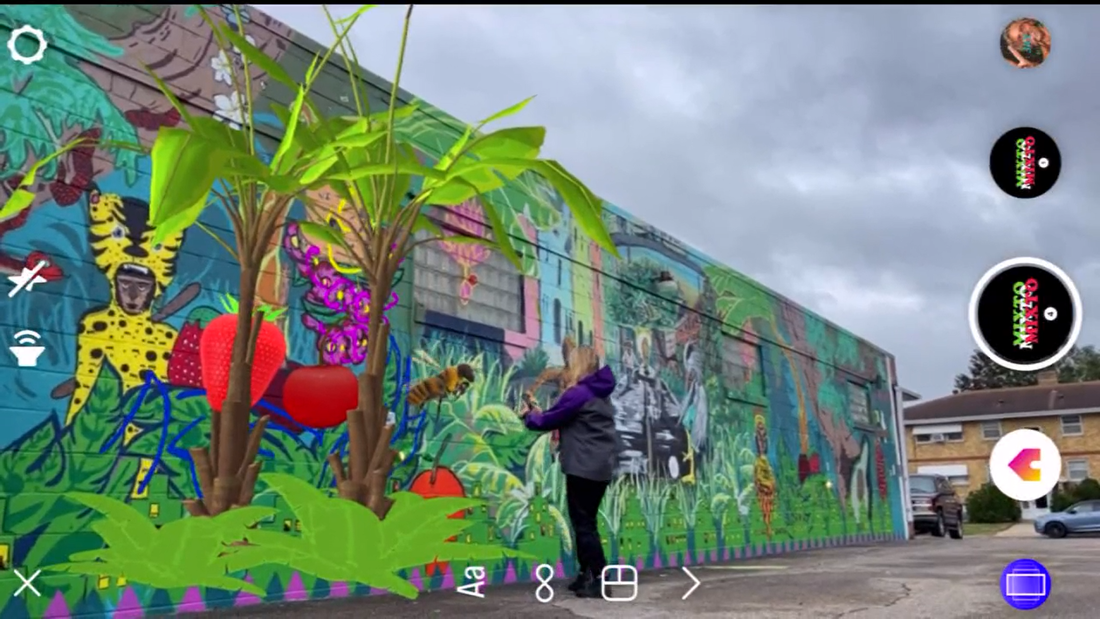
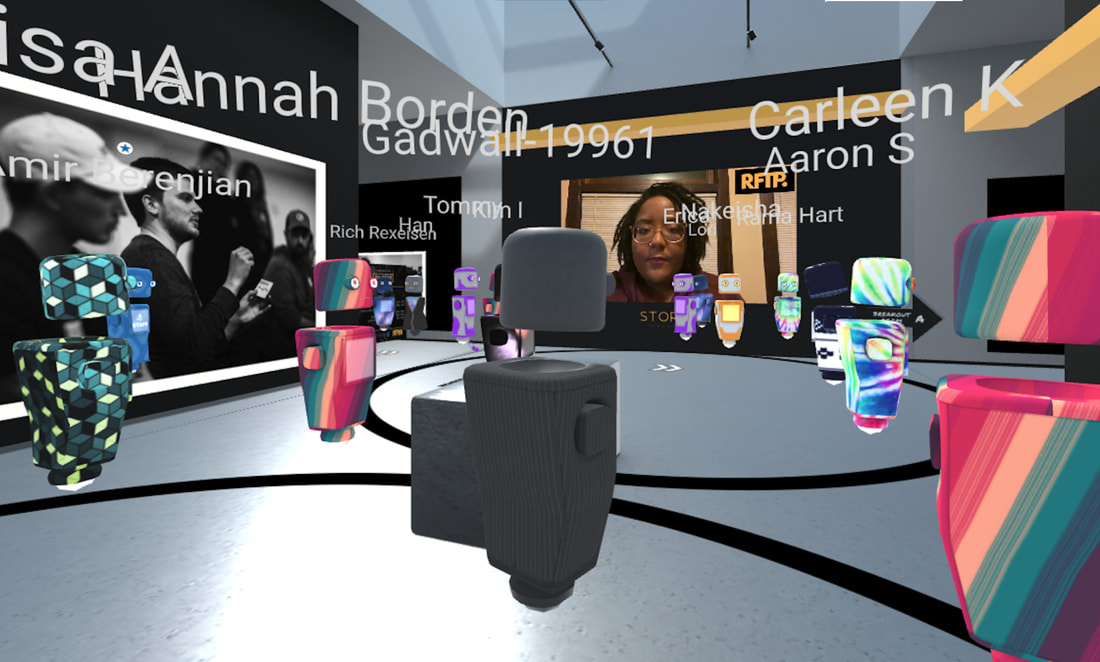
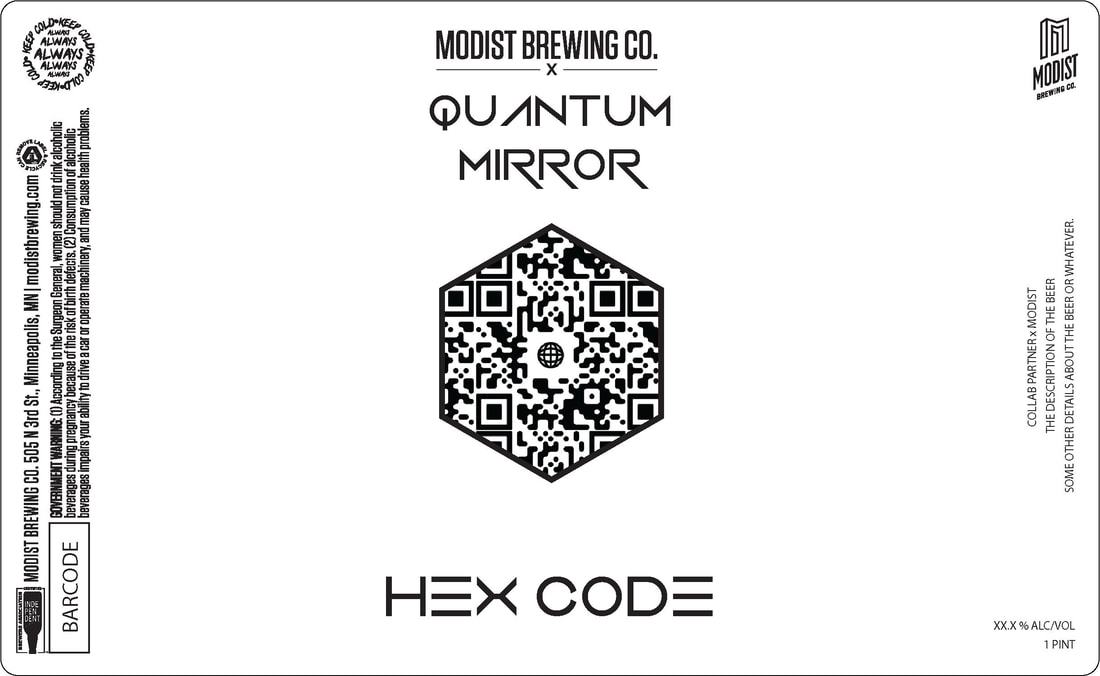
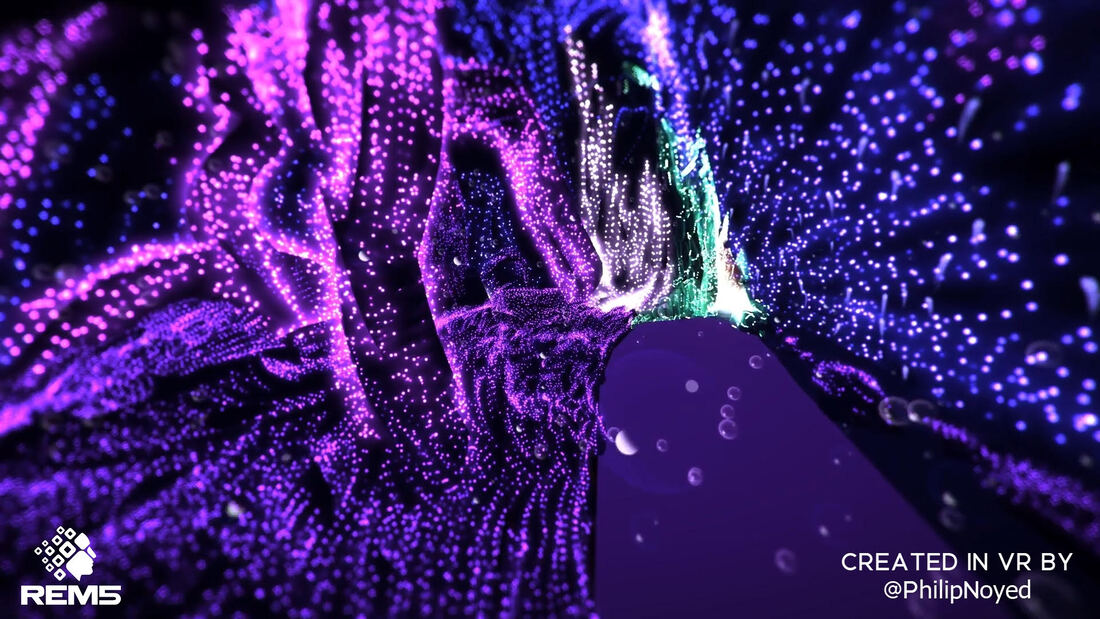
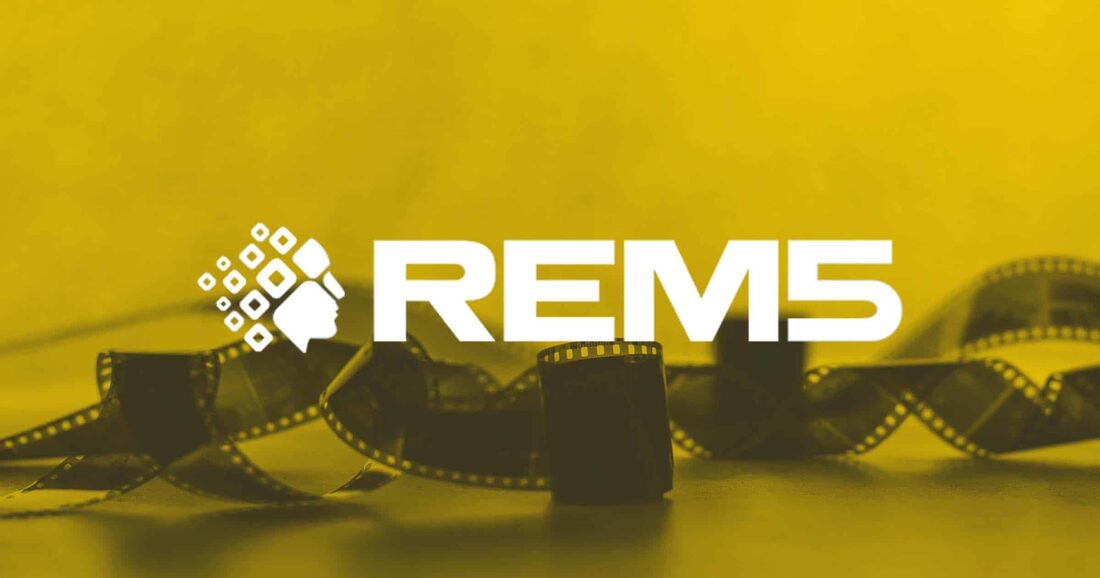
 RSS Feed
RSS Feed